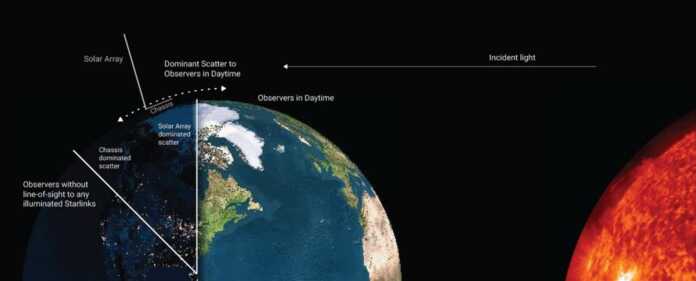After more than three years have passed since the first launch of the Starlink satellites, there have been many regions that have benefited from the Internet offered by these structures.
However, despite the favorable impact that these satellites have had on telecommunications, their presence has been the subject of controversy within the community of astronomers, who have stated that they have hindered their work at ground-based observatories.
SpaceX took note of all this and made the necessary adjustments to reduce the glare of the sun projected on the structure of its satellites. However, the company is working on a definitive solution to apply it to the next generation of satellites.
In this sense, SpaceX recently announced that it would improvements to its Starlink 2.0 satellites with which the world astronomical community will be pleased. These adjustments will be mainly focused on correct the way satellites reflect sunlight as they orbit the Earth.
If successful, the Starlink satellites would be almost imperceptible to the naked eye once they are at a standard operating altitude.
Thus, SpaceX shared a document that describes the actions it will take to reduce the brightness of its satellites when they are hit by the sun’s rays.
Although in the past the company had suggested placing sun visors to block reflections generated at the bottom of the chassis, it was later found that this could impair the performance of the satellite.
In that sense, the material would cause a blockade of the laser links necessary to increase the coverage radius.
Likewise, the presence of these viewers would suppose a higher fuel consumption of the propellant by generating considerable resistance.
That is why in the end SpaceX will choose to use radio frequency mirror filmswhich will fulfill the function of scatter most of the sunlight.
Although this may not be a perfect solution, the truth is that the company is working on the development of a new version to implement it in the next fleet of Starlink satellites.
The document also mentions the changes that will be made in terms of design, giving a bigger size to the satellitesas well as applying an increase in the relationship surface-mass.
In addition to this, three techniques will be implemented to address the situation of excessive brightness generated by satellites.














